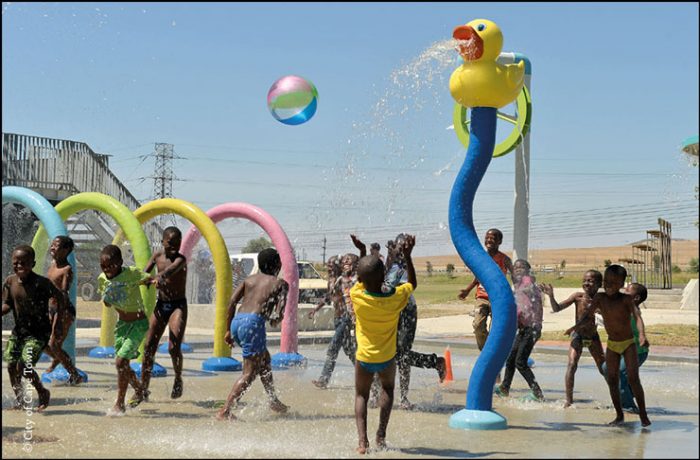31 July 2019
Heatwaves are inevitable. Their detriment to city dwellers is not.



Climate change is increasing both the frequency and intensity of heatwaves around the world, reports the World Weather Attribution. These heatwaves are crippling cities by putting at risk the lives of residents, especially those unable to escape the heat. Infants, the elderly, pregnant and lactating women and those with poor living conditions in cities often struggle to cope with extreme heat, making heatwaves life-threatening to a significant portion of the world’s people.
Europe is currently in the midst of a record-breaking heatwave during which the United Kingdom, Paris, Belgium and The Netherlands all experienced their highest ever recorded temperatures. As our earth continues to warm, the prevalence of such debilitating heatwaves increases.
“Heatwaves are predictable and preventable,” says International Federation of Red Cross and Red Crescent Societies (IFRC) President Francesco Rocca. “The actions that authorities can take to save lives and significantly reduce suffering are simple and affordable.”

Eddie W Jjemba, the Urban Resilience Advisor at the Red Cross Red Crescent Climate Centre, celebrates the guide’s launch with the ICLEI Africa team.
From left to right: Claudia Schroder (ICLEI Africa), Eddie W Jjemba (Red Cross Crescent Climate Centre), and Kate Strachan (ICLEI Africa).
Heatwaves, particularly on the African continent, often do not receive the attention and resources necessary to deal with them effectively. In part, because many of us living on the African continent are used to experiencing high temperatures. In part, because we often do not know the scale of their impacts; the health effects of a heatwave are often not attributed directly to the heatwave itself. Climate scientists are telling us that heat waves are set to increase in severity and frequency in African cities, which will negatively affect the most vulnerable in our communities. Heatwaves, like the broader issue of climate change, invoke feelings of outrage in many of us, as those who have done the least to contribute to the problem, are often the worst hit,” says Dr Meggan Spires, ICLEI Africa’s Senior Manager for Climate Change, Energy & Resilience.
Heatwaves are predictable and actions are affordable
Around 5 billion people – much of the world’s population – live in regions where weather services can predict extreme heat days or even weeks in advance. By using the Heatwave Guide for Cities, officials, residents and even businesses can implement simple measures to stay safe. By briefing the media, for instance, messages can spread through the city to help people prepare. The simple message, “stay in the shade and stay hydrated” can significantly reduce the number of people needing medical attention once the heatwave hits.
It shouldn’t, however, be the residents alone that take responsibility. The city can cool its infrastructure down through urban greening, where trees, grass and plants intersperse concrete, steel and glass. Parks and green spaces provide shade and refuge during heatwaves. Shade structures and car-free zones also provide some reprieve, while painting surfaces with reflective paint allows heat to bounce off buildings instead of getting trapped in the city’s fabric.
In Durban, South Africa, the eThekwini Municipality developed the Green Roof Pilot Project which showcases how introducing greenery on rooftops can lower the temperature inside the buildings and reduce the need for air-conditioning. Furthermore, green roofs reduce the speed at which water flows off the roof and generally increases the visual appeal of buildings.
This is only one example of how previously unused spaces become powerful pockets for urban resilience.

The eThekwini Municipality planted greenery on a total area of 550m2 of rooftop spaces to test the positive effects of green roofs.
Protecting the vulnerable during heatwaves
Certain geographical areas in a city may be more vulnerable to heatwaves than others. In Kenya, this study revealed that urban informal settlements often experience heatwaves more intensely. Because of their high density, disadvantaged communities typically lack green spaces and shaded areas. Urban greening is only one intervention that could protect these communities from the heat, but there are many more.
In Cape Town, the city installed six spray parks in lower income areas, releasing some of the pressure of the city’s regular heatwaves. Unlike swimming pools, people with disabilities could access these parks too; which, interestingly, use only 15 to 20 per cent of the water used by a medium-sized municipal pool – an important consideration for water-stressed cities.

Spray parks in low-income areas provide not only a reprieve from the heat, but also a gathering place for urban youth.
Resilience beyond occasional heatwaves

ICLEI Africa created this infographic for the Cities Guide to Heatwaves to visualise urban interventions for heatwaves.

